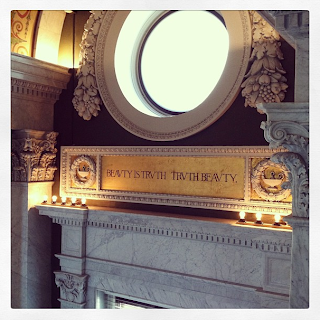
Hoooo boy. This book reminded me seven times to sideways why I read horror novels as infrequently as I do (mostly due to the lack of sleep that inevitably covers the days of reading), but why I still turn back to them even though they make my skin crawl and generally leave me sleeping with the lights on.
NOS4A2, Joe Hill's most recent novel, centers on Victoria "Vic" McQueen and her (pardon the term) arch-nemesis, Charlie Manx. Both have the power to bend the world as we know it to their own reality: Vic can locate lost items by riding a six-speed bike over a decrepit covered bridge, Manx can drive children to a world called "Christmasland" in his antique Rolls Royce (with the appropriately inappropriate and titular license plate number NOS4A2). When Vic goes off in search of Manx, her covered bridge takes her right to him--and when she escapes his wrath, she becomes the first of his victims ever to survive.
But when Vic returns to reality and Manx is locked up in jail, she finds she remembers two versions of the events: the first, full of fantastical covered bridges, impossible sights, impractical things; the second, that she was kidnapped and drugged and held captive by Manx for days. In the face of reality, she--and her shrinks--push her mind to accept the latter as the truth.
Vic spends her entire adult life running from her past, moving from one mental hospital to the next as she tries to screw herself back into reality and forget Manx ever existed.
But Manx will never forget her, and when he escapes, he heads straight for her--and her son Wayne--vowing to kill Vic and take Wayne to Christmasland.
NOS4A2 is the kind of creepy, weird, totally screwed up story that absolutely defies summation, so take the summary above with a grain of salt, please.
Hill has a knack for stories and storytelling, teasing enough detail to bring the fantastical to life without ever getting bogged down in worldbuilding, and an imagination in which it is easy to get lost. Every seemingly innocuous action in
NOS4A2 is packed with meaning and consequence, which makes what could have sufficed simply as an excellent horror novel function on so many more levels; Hill forces us, through Vic, to reconsider our interpretations of what is real versus what is imagined:
"I kind of think it is our world. A version of it anyway. Everyone lives in two worlds, right? There's the physical world... but there's also our own private inner worlds, the world of our thoughts. A world made of ideas instead of stuff. It's just as real as our world, but it's inside."
In Charlie Manx, Hill brings evil to life--but also pity. In Vic's friend Maggie Leigh, Hill applauds the power of libraries and librarians. In Vic's boyfriend Lou, he captures the nice guy with an eating disorder who spends an entire life just trying to get something right. In Vic's parents, the unstable, unhappy marriage that isn't great but isn't pure evil; in Vic's love for her son the love of a mother who refuses to abandon her child no matter how many mistakes she's made in the past.
The world of
NOS4A2 is complicated and messy and difficult, just like ours, with enough tweaks to our reality--or at least reality as we know it--to bring the stuff of nightmares, quite literally, to life. It is horror in a world at once so different from ours that we know it couldn't possibly be real, but the details of Hill's characters are so true and so realistic that it is quite easy to find oneself questioning just why, for instance, you might be humming "Jingle Bells" in the middle of September. Perhaps you've heard Manx driving by on his way to Christmasland--or perhaps you've just been reading too many Joe Hill novels.
---

This review is part of TLC's book tour for
NOS4A2.
For thoughts from other bookworms,
see the full tour schedule.
---
Thanks to the publisher for providing a copy of this title for review.
NOS4A2 | Joe Hill | William Morrow | Trade Paper | October 2013 (reprint edition) | 720 pages


























